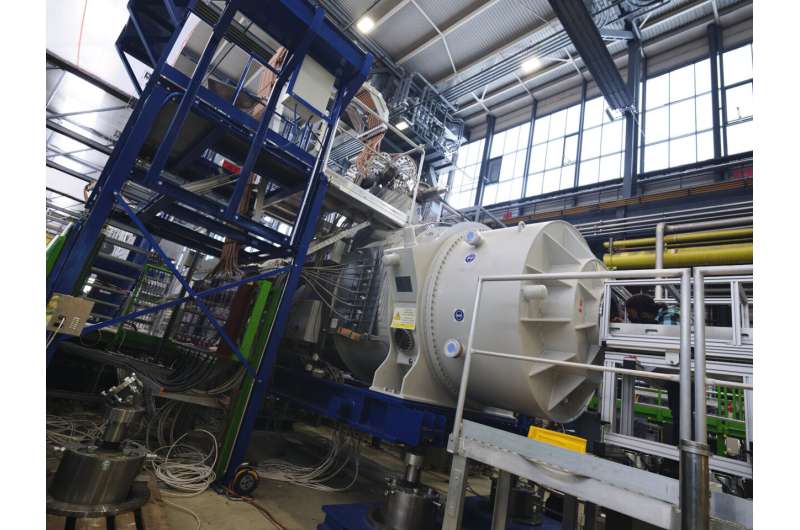First magnets for FAIR tested at CERN

The very first superconducting magnets have been tested at CERN for NUSTAR (Nuclear Structure Astrophysics and Reactions), one of the experiments at the future international Facility for Antiproton and Ion Research (FAIR), currently under construction at the GSI laboratory (the Helmholtz Centre for Heavy-Ion Research in Darmstadt, Germany).
FAIR is expected to start commissioning for its first experiments in 2025. It is a multipurpose accelerator facility that will provide beams, from protons to uranium ions, with a wide range of intensities and energies, in addition to secondary beams of antiprotons and rare isotopes. It will enable scientists to produce and study reactions involving rare exotic hadronic states or rare, very short-lived radioactive nuclei.
The project was launched on 4 October 2010, when nine partner countries (Finland, France, Germany, India, Poland, Romania, Russia, Slovenia and Sweden) signed an intergovernmental agreement for FAIR's construction and operation. The UK joined the project as an associate member in 2013, and the Czech Republic is an aspirant partner.
As part of a collaboration agreement between the Organization and GSI-FAIR signed in 2012, 56 magnet assemblies intended for the Super-Fragment Separator (SuperFRS), the central device of the NUSTAR experiment, will be entirely tested and validated at CERN.
Thus, 32 multiplets and 24 dipoles will be tested at the Laboratory. For this purpose, a new test facility has been especially designed and constructed in CERN's Building 180 to validate no fewer than 30 types of magnets. Three test benches have been created by experts from CERN and GSI to accommodate up to 7-meter-long, 3.5-meter-high magnet assemblies. The heaviest ones weigh up to 70 tons, more than two times the weight of an LHC dipole. "A large and complex cryogenic system has been developed, combining two pre-cooling/warming-up units and a 4.5 K liquid helium refrigerator," explains Antonio Perin, work package leader for the cryogenic system. "The plant is designed for continuous operation: the validation tests are performed on one bench, while the second bench is cooling down and the third one is warming up; the test sequence lasts about six weeks for each magnet." During the tests, the magnets are powered to their nominal current and their magnetic field is accurately mapped. The powering and magnetic measurement systems have been adapted to the new test facility, which was made possible thanks to the unique combination of competences existing at CERN.
"We are currently testing the first-of-series magnets; the series ones will be delivered next year. All 56 magnet assemblies should be tested by 2026," says Germana Riddone, CERN's technical coordinator of the project. "Many CERN groups and GSI partners have been involved in the successful installation of the new test facility and its commissioning, and still are now for the validation tests. This collaboration with GSI is a very good example of how CERN works hand-in-hand with national infrastructures and how that adds mutual value. We're really happy to report that everything is going smoothly and according to the updated plan."
More information: Backgrounder: cerncourier.com/a/fair-forges-its-future/
Provided by CERN





















